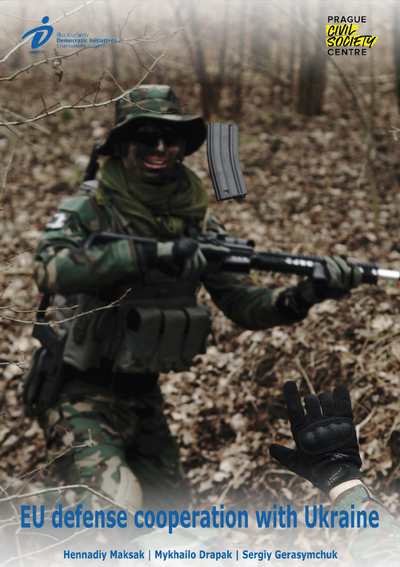EU defense cooperation with Ukraine
 Hennadiy Maksak, Mykhailo Drapak, Sergiy Gerasymchuk
Hennadiy Maksak, Mykhailo Drapak, Sergiy Gerasymchuk
One year of full-scale Russian aggression against Ukraine demonstrates that despite creativity and innovations introduced by Ukrainian Armed Forces, Kremlin still maintains a significant advantage in terms of manpower and military hardware. Amidst heavy casualties and a lack of operational success on the battlefield, Putin and his military team are set to continue the war of attrition with expectations of growing fatigue on the side of European partners of Ukraine.
Both NATO and EU members declare a willingness to support Ukraine as long as it is needed for Ukraine to prevail. Some instruments appeared to be effective in generating military assistance for Ukraine, but some were not flexible enough to keep pace with reality on the ground.
The lessons of one year of the largest high-intensity war in Europe have to be learned in the EU capitals both in respect of buttressing the military capabilities of Ukraine and in generating sufficient combat power in EU member states, relying on the cooperation of European and Ukrainian defense industries.
The agility and flexibility of the European Union member states have empowered the significance of the European Peace Facility in 2022. In 2023, it becomes more obvious that the instrument was not designed to handle such a scale of security challenges. Now the European institutions and member states (MS) have to find a viable path to preserve the financial stability of the EPF as well as its global outreach in years to come.
Since the beginning of Russia's full-scale invasion of Ukraine, EU member states, in particular with the support of European institutions and funds, have been providing military aid to official Kyiv every month to meet the urgent needs of Ukrainian defenders and their own capabilities. However, certain decisions regarding the types and quantities of weapons allocated required political will from some governments, resulting in delays. Nevertheless, the EU countries provided military aid to Ukraine starting with non-lethal packages and small arms in the early weeks, and subsequently shifted to urgent searching for available Soviet weapons and providing modern Western models of air defense, armored vehicles, and artillery. If, at the beginning of the full-scale invasion, the largest number of heavy weapons to Ukraine among all EU countries came from Central European countries, then by the end of 2022, almost all member states have joined this process.
The provision of armored vehicles, artillery, multiple launch rocket systems, and air defense from EU countries with the support of European institutions (along with supplies from the USA and the United Kingdom) played a key role in the fact that Ukraine was able to restore losses in equipment after the first months of a full-scale invasion, to create a qualitative advantage in defeating enemy forces in the summer and in the autumn of 2022, to accumulate resources for the partial liberation of Kharkiv and Kherson Oblasts in the autumn, to protect Ukrainian citizens and energy infrastructure from Russian missiles in the cold period of the year. Currently, deterring the attacks of Russian manpower and preparations for a counteroffensive by the Defense Forces of Ukraine are underway. The EU and its member states participate in this by training the Ukrainian military and providing modern Western main battle tanks, armored vehicles, and artillery. At the same time, there is no reason to expect that Russia's challenges to the security of Ukraine and the whole of Europe will diminish in the coming year. Therefore, the military aid of the EU countries to the official Kyiv should finally move from responding to critical needs to systematic work on mutual strengthening of defense capabilities.








